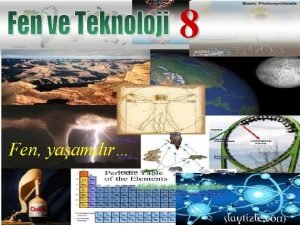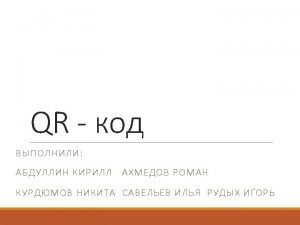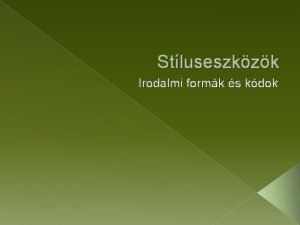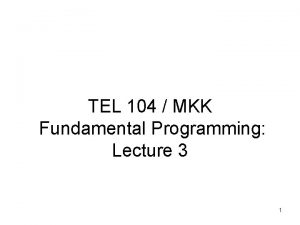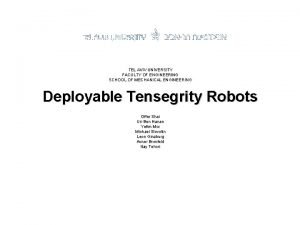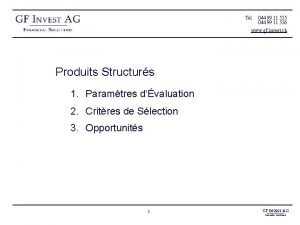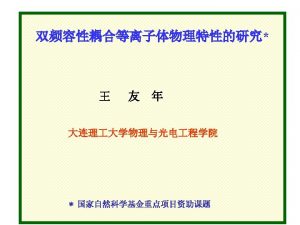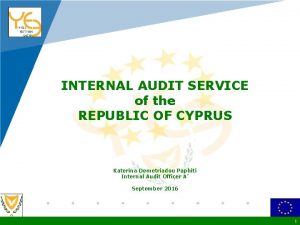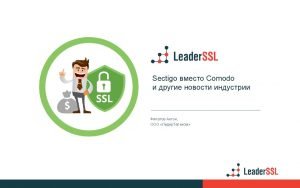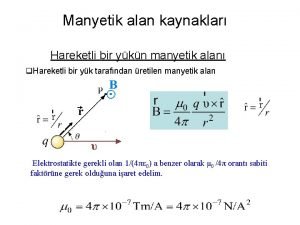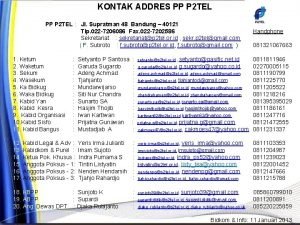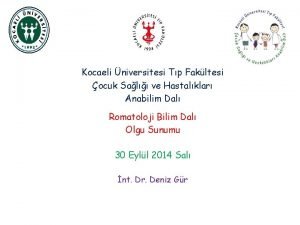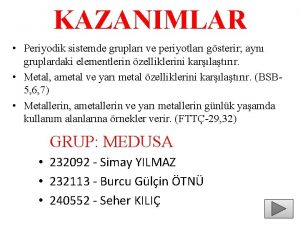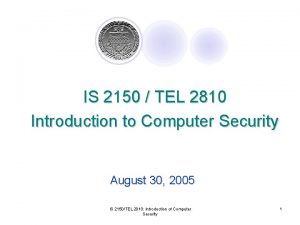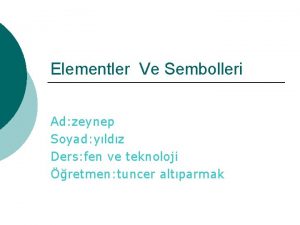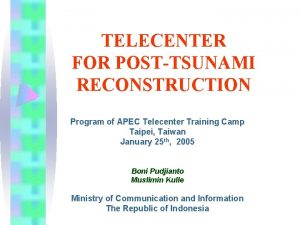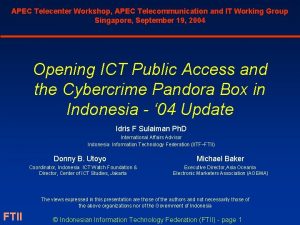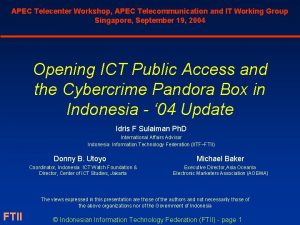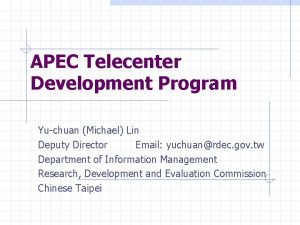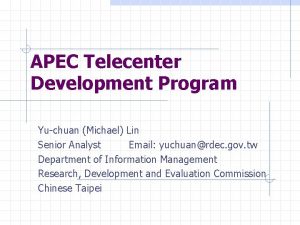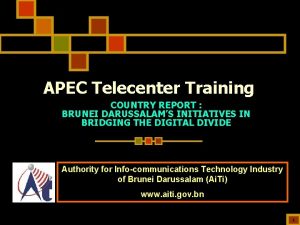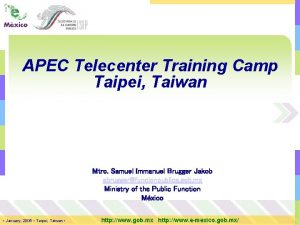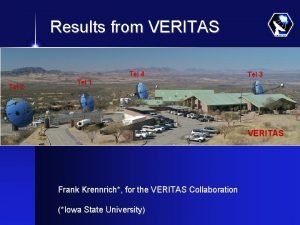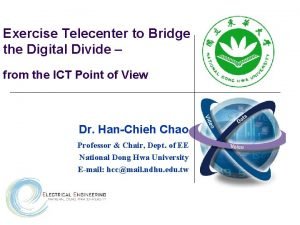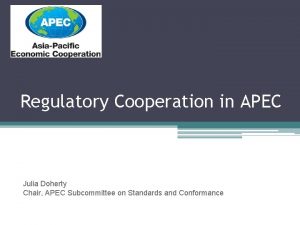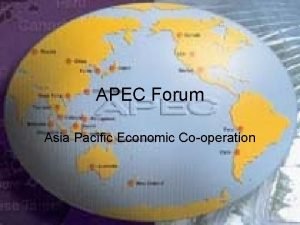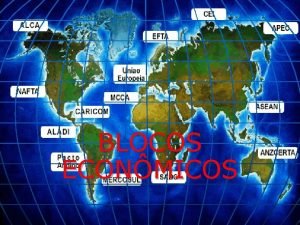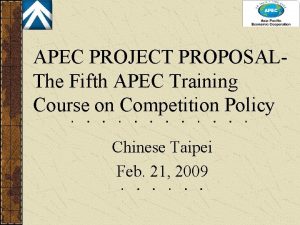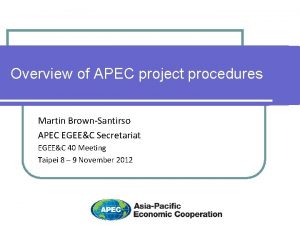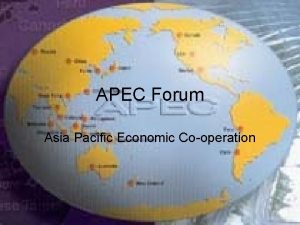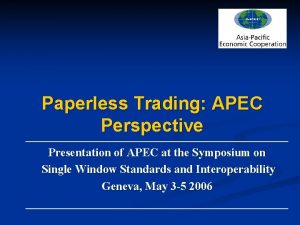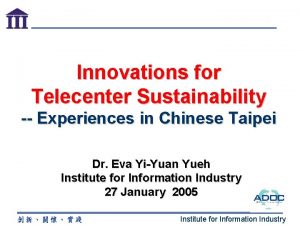APEC TEL 30 APEC Telecenter Workshop Digital Human



































- Slides: 35

APEC TEL 30: APEC Telecenter Workshop Digital Human Rights for all A experience of telecenter development in rural areas Gwo-Jiunn Huang Executive Vice President, Institute for Information Industry (III) September 19, 2004 @Singapore 創 新、關 懷、實 踐 © 2004 Institute for Information Industry

Outline F Introduction v “Digital Divide” & its worldwide reflections v “Digital Divide” & its remedies v Government’s effort in bridging “Digital Divide” v III’s role in bridging “Digital Divide” v Closing remarks 創 新、關 懷、實 踐 2 © 2004 Institute for Information Industry

From “nuts & bolts” to “bits & bytes” v “The hand-mill gives you society with the feudal lord; the steam-mill, society with the industrial capitalist. ” v In the accelerated globalization process of the last decades, “Information” and “Knowledge” have become the decisive factors in determining a nation’s competitiveness. different Information Society same Location In 1850, jobs in the fields of Management, Professional, Technical & Services accounted for 4% of all jobs. In 1900, it became 13%. In 2000, it grew to over 50%. Industrial Society Agricultural Society same 創 新、關 懷、實 踐 In 1940, jobs in the field of Manufacturing accounted for 40% and productivity accounted for 50%. In 2000, the percentage fell to 15% only. In 1820, 70% of all jobs were related to Agriculture, In 2000, the percentage fell to 1. 9% only. Time 3 different © 2004 Institute for Information Industry

ICT & the Post-Capitalism Society ICT Globalization ICT Knowledge-based Information-driven economy society ICT Identity-oriented individualism ICT 創 新、關 懷、實 踐 4 © 2004 Institute for Information Industry

Outline v Introduction F “Digital Divide” & its worldwide reflections v “Digital Divide” & its remedies v Government’s effort in “Digital Divide” v III’s role in bridging “Digital Divide” v Closing remarks 創 新、關 懷、實 踐 5 © 2004 Institute for Information Industry

“Digital Divide” v “The so-called digital divide was actually several gaps in one. There is technology divide, great gaps in infrastructure…” v “We cannot assume that such gaps will disappear on their own, …” v “Technology has produced the information age. Now it is to all of us to build an information society…” - UN Secretary General, Kofi Annan 創 新、關 懷、實 踐 6 © 2004 Institute for Information Industry

International efforts to bridge “Digital Divide” v The “Digital Opportunity Task Force” (the DOT Force) was proposed by Leaders at the G 8 Kyushu-Okinawa Summit in July 2000. v The 2001 APEC meeting treated bridging “Digital Divide” as a critical issue in its agenda, where Chinese Taipei proposed “Transforming the digital divide into digital opportunities” and was welcomed. Chinese Taipei advocated the establishment of an ADOC at the 11 th APEC Economic Leaders’ meeting in Bangkok, 2003. The proposal was welcomed and reflected in the Chair’s summary. v The 2003 WSIS in Geneva listed “How Digital Divide is preventing equal sharing of opportunities concerning ICTs” as their opening meeting discussion. v and more… 創 新、關 懷、實 踐 7 © 2004 Institute for Information Industry

APEC Member economies Russia Vietnam Peru v 21 Member Economies:Australia、Brunei、Canada、Chile、China、Hong. Kong、Indonesia、 Japan、Korea、Malaysia、Mexico、New Zealand、Papua New Guinea、Peru、Philippines、 Russia、Singapore、Chinese Taipei、Thailand、USA、Vietnam. v 3 Observers:Secretariat/ASEAN、Energy Forum(PECC)、South Pacific Forum. v 2 Guest Economies :Pakistan、Venezuela. 創 新、關 懷、實 踐 8 © 2004 Institute for Information Industry

“The e-state we are in” APEC member economies Note: PNG and Brunei are not on the list. Source:WEF NRI, 2003. 創 新、關 懷、實 踐 9 © 2004 Institute for Information Industry

Efforts to Bridge “Digital Divide” Japan:e-Japan (2001) IT Strategy Headquarters USA:Falling Through the Net (1998) Department of Commerce UK:Closing the Digital Divide (2000) Department of Trade and Industry & PAT 15 Hong Kong:Digital 21 (2001)) Information Technology and Broadcrasting Bureau 創 新、關 懷、實 踐 10 Korea:Cyber Korea 21 (1999) Minister of Information and Communication *The Digital Divide Act (2001) © 2004 Institute for Information Industry

Outline v Introduction v “Digital Divide” & its worldwide reflections F “Digital Divide” & its remedies v Government’s effort to bridge “Digital Divide” v III’s role in bridging “Digital Divide” v Closing remarks 創 新、關 懷、實 踐 11 © 2004 Institute for Information Industry

WEF NRI Rankings World Ranking USA UK CAN SNG FIN TW 2001 -2002 1 10 12 8 3 15 2002 -2003 2 7 6 3 1 9 Environment Component I. 1 7 4 8 2 15 Readiness Component I. 3 10 5 1 2 7 Usage Component I. 4 12 10 2 1 7 Network Readiness Index Rank Source: “The Global Information Technology Report 2002 -2003: Readiness for the Networked World, ” World Economic Forum, 2003 “Global Competitiveness Report 2002 -2003, ” World Economic Forum, 2003 創 新、關 懷、實 踐 12 © 2004 Institute for Information Industry

e-Environment Status (2004) Items Penetration Rate Internet Population 61. 01% Broadband Users 71. 44% Households Connection 71. 58% Broadband Households 71% Mobile Phone 106. 45% Cable TV 84. 6% Source: TWNIC & Ministry of Transportation and Communication, 2004 創 新、關 懷、實 踐 13 © 2004 Institute for Information Industry

“Digital Divide” Information haves & have-nots v Aborigines vs. Haka Mainstream Ethnic Groups 76. 2% 66. 9 35. 2 =1. 9 35. 2% 64. 2% 56. 2% Aboriginal Haka Total 82. 6 50. 3% 48. 3% 80 43. 8% 42. 4% Household Internet Access Rate PC skills Elected Official / Managerial Service / sales Skilled Mechanical / Assembly Non-technical labors Agricultural, Animal Husbandry, Forestry and Fishing 71. 4 65 66. 4 PC penetration Rate 73%(Taipei City) = 2. 92 25%(Nantou County) = 51. 9 47. 2 45. 5 38. 9 32. 7 30. 3 35 41. 3 25 20 0 Taipei. Taichung Hsinchu Taipei Hsinchu// Yunlin Penghu Taitung Chiayi Nanton City County County Internet skills v Senior Citizens vs. Teenagers & Young Adults 100% 96. 6% 95. 7% 87. 7% 83. 8% 90. 9% 82. 8% 97. 1% 96. 6% 80% Internet skills 88. 2% PC skills 84. 1% 66% 61. 2% 51. 9% 62. 4% 51. 4% 48. 8% 95. 7%(professionals) 41. 6% 46. 4% 7. 2%(Agricultural) 35. 9% = 13. 29 26. 9% 21. 5% PC skills 12% 7. 2% Internet skills 創 新、關 懷、實 踐 78. 5 40 v Blue-collared Citizens vs. Professionals Technician / assistant Clerical 78. 2 78. 6 73 71. 2 66. 7 Household access rate 60 56. 2 =2. 56 48. 3 22 =2. 18 22. 2 42. 4 22% 22. 2% 9. 3 =4. 56 Professional Unit: % 100 9. 3% PC penetration rate v Urban vs. Rural Areas 60% 46. 4% 55. 1% 40% 20% 0% Age Divide for = Internet Access 14 21% 96. 6% (15 -20 year old) = 21 4. 6% ( 61 year old) 15 -20 Age group 21 -30 26. 9% 37. 2% 31 -40 4. 6% 41 -50 51 -60 5. 8% 60 and over © 2004 Institute for Information Industry

Outline v Introduction v “Digital Divide” & its worldwide reflections v “Digital Divide” & its remedies F Government’s effort to bridge “Digital Divide” v III’s role in bridging “Digital Divide” v Closing remarks 創 新、關 懷、實 踐 15 © 2004 Institute for Information Industry

Transforming “Digital Divide” into “Digital Opportunity” Creating Digital Opportunity Service Content • Digital Content • e-Taiwan Project • Digital Archive • NICI Program • Digital Learning • e-Logistics Center • … • National Culture Database 創 新、關 懷、實 踐 16 Impacts on • Economy • Society • Education • Human Rights © 2004 Institute for Information Industry

Efforts to bridge “Digital Divide” e-aspects v e-technology v e-industry v e-society Government actions v e-awareness v e-infrastructure v e-readiness 創 新、關 懷、實 踐 To achieve a e-society of full e-readiness with citizens of advanced network literacy. 17 Individual efforts v literacy v media literacy v computer literacy v network literacy © 2004 Institute for Information Industry

RDEC’s Telecenter development program Purpose Measures Achievements 創 新、關 懷、實 踐 v To provide internet spots and construct information service websites for residents in the remote districts; it enables the access to all e-Government services and information on the internet and then reduce the digital divide between the remote districts and the urban areas. v Drawing up yearly plans for reducing the digital divide. v Integrating resources from the governmental and the private sectors. v Encouraging voluntary groups to participate in the remote-district information service tasks. v Accomplished the study of strategic plans for setting up public information service stations in the remote districts. v Completed the installation of 70 remote-district internet spots in 35 rural towns in 2003. v Providing subsidies to help 12 local governments and 12 organizations setting up 33 remote-district internet spots in 29 rural towns in 2004. 18 © 2004 Institute for Information Industry

-Achievements- Distribution of telecenters by RDEC Counties No. of telecenters in remote areas (2001) Taipei County 1 Ilan County 6 Taoyuan County 2 Hsinchu County 21 Miaoli County 6 Taichung County 2 Nantou County 3 Yunlin County 1 Chiayi County 4 Tainan County 1 Kaohsiung County 3 Pingtung County 7 Hualien County 39 (including 10 with Kiosk-model) Taitung County 37 (including 10 with Kiosk-model) Penghu County 5 Kinmen County 1 Lienchiang County 2 Total 141 Source: RDEC, 2004 創 新、關 懷、實 踐 19 © 2004 Institute for Information Industry


-Achievements- Telecenters service status Source: RDEC, 2004 創 新、關 懷、實 踐 21 © 2004 Institute for Information Industry

Government’s efforts Past Now “Bridging Digital Divide Committee” is established to integrate the related tasks. Government agencies made efforts to bridge “Digital Divide” separately. Ministry of Interior Council of Laborer NICI Integrated Steering panel for bridging the digital divide Council of Aboriginal Ministry of Education 創 新、關 懷、實 踐 Council of Agriculture Tasks • Bridging “Digital Divide” in remote areas • Bridging “Digital Divide” in industries • Bridging global “Digital Divide” 22 © 2004 Institute for Information Industry

e-Opportunity Project Small and Medium Enterprises Low informatization Bridging “digital divide” in industries aged people aborigine children Least developed countries Information poor woman Bridging “digital divide” in country 創 新、關 懷、實 踐 Bridging global “digital divide” 23 © 2004 Institute for Information Industry

Outline v Introduction v “Digital Divide” & its worldwide reflections v “Digital Divide” & its remedies v Government’s effort to bridge “Digital Divide” F III’s role in bridging “Digital Divide” v Closing remarks 創 新、關 懷、實 踐 24 © 2004 Institute for Information Industry

III’s mission To develop the economy as a world ICT readiness leader 3 e enabler Think tank and consultant of government ICT policy Driver of Industrial internationalization Promotion of IT industry development R&D of SW technology & interoperability standards Promotion of IT applications & bridging digital divide Training of IT manpower 創 新、關 懷、實 踐 25 © 2004 Institute for Information Industry

III’s efforts to bridge “Digital Divide” Major Tasks 城鄉e起來, 台灣好將來 v. Continuously promote ICTs in remote areas and for underprivileged people based upon the philosophy of loving care. v. To become an enabler for ”promoting knowledge economy, sharing equality, and achieving digital equality to develop as a leading economy of ecompetitiveness. ” • Building 100 “digital opportunity centers” to offer digital access and learning opportunities in remote areas within 5 years. • Providing digital services in the digital opportunity centers to promote e-learning and e-commerce. • Aggregating the task force of III and the resources from public & private sectors to devote to the work of bridging digital divide. 創 新、關 懷、實 踐 26 © 2004 Institute for Information Industry

Of homes without networking, 42. 7% by Choice Reasons for Not Possessing a Computer Reasons for Not Accessing the Internet (33. 1% of respondents) (10. 7% of respondents) Other 6. 7% Can be used elsewhere 3. 5% Poor content 3. 1% Too expensive 8. 4% Unneeded / no desire to use 38. 1% Unable to use 43. 4% Other 19. 3% Facilities / environment insufficient 5. 4% Unneeded / No desire to use 57. 0% No time 7. 2% Too expensive 8. 0% Note: Based on March 2003 telephone survey of persons age 15 or older throughout the economy. The effective sample was 2, 720. Source: Research, Development, and Evaluation Commission, Executive Yuan, compiled by MIC, February 2004 v 43. 8% of respondents classified as having a low level of home digitalization (either no PC or Internet access); 42. 7% of such homes maintain this low level by choice (unneeded / no desire to use) [(33. 1%*38. 1%+10. 7%*57%)/43. 8%=42. 7%] v The question for how to close the digital divide has deepened from "able or unable? " to "why not? " 創 新、關 懷、實 踐 27 © 2004 Institute for Information Industry

Case: Digital Opportunity Center (Jhongliao, Nantou County) 創 新、關 懷、實 踐 28 © 2004 Institute for Information Industry

Digital Opportunity Center: before renovation under construction 創 新、關 懷、實 踐 29 © 2004 Institute for Information Industry

Digital Opportunity Center: after e-education digital lounge 創 新、關 懷、實 踐 30 © 2004 Institute for Information Industry

Telecenters in 921 Earthquake Reconstruction Area 創 新、關 懷、實 踐 31 © 2004 Institute for Information Industry

III’s international efforts to bridge “Digital Divide” v Organized a delegation to attend WSIS(World summit on the Information Society) in Dec. 2003 at Geneva, § to participate in the WSIS parallel (Conference on Volunteering and ICTs) and discussed with over 100 state leaders on: ”How to deal with the new challenges in Information Society” including “how to bridge the digital divide”、”how to promote the concept of Technical Volunteer and how to train them”、”how to develop the digital contents on the Internet”, etc. v Formed a mission for int’l digital opportunities in Feb. 2004 to visit Guatemala and Swaziland, v Participated in government projects. v And more… 創 新、關 懷、實 踐 32 © 2004 Institute for Information Industry

Outline v Introduction v “Digital Divide” & its worldwide reflections v “Digital Divide” & its remedies v Government’s effort to bridge “Digital Divide” v III’s role in bridging “Digital Divide” F Closing remarks 創 新、關 懷、實 踐 33 © 2004 Institute for Information Industry

Closing remarks v Complete “e-Taiwan Project” to foster the economy as a leading one of ecompetitiveness in the world § The task includes strategic perspectives of e-awareness, e-infrastructure and e-readiness; § along with the advancement of emerging e-technology, e-industries and e-society. v Encourage equal sharing of contents/cultural resources § The quality of digital opportunities for the underprivileged is upon that of the contents; § ICT can greatly help the creation of contents; it can also greatly improve the services of contents and hence encourage the equal sharing of contents/ cultural resources; hence § The development of content/cultural/creative industries must focus on both industrial volumes and social values. v Realize a society of digital equality by all means to realize digital human rights § The key to bridging digital divide is not only equipments but, more importantly, upon people; the mission is by, of and for the people; § Creating digital opportunities is a critical task to bridge digital divide; § The aspects of economy, education, society and human rights should all be taken into account. § The idea of prior digital area should be implemented. Digital divide is not just an ICT problem, but also a social one, it should be resolved by grassroots' social movements. 創 新、關 懷、實 踐 34 © 2004 Institute for Information Industry

thank you for your attention gj@iii. org. tw 創 新、關 懷、實 踐 © 2004 Institute for Information Industry
 Digital sigange workshop
Digital sigange workshop Tel mixto
Tel mixto Clasificacion de rapin y allen
Clasificacion de rapin y allen Tel aviv university electrical engineering
Tel aviv university electrical engineering Tel mixto
Tel mixto Mammoth oil 1920
Mammoth oil 1920 Tel ve levha haline getirilebilen element
Tel ve levha haline getirilebilen element 12345678 123
12345678 123 Szóképek és retorikai alakzatok
Szóképek és retorikai alakzatok Tel 104
Tel 104 Picture tel
Picture tel Gerard tel
Gerard tel Microfluidic resistance calculator
Microfluidic resistance calculator Tel aviv university mechanical engineering
Tel aviv university mechanical engineering Tel aviv university electrical engineering
Tel aviv university electrical engineering Tel 971
Tel 971 Tel
Tel Tel 044
Tel 044 Tel
Tel Sharengen
Sharengen Tel / tokyo electron sccm te
Tel / tokyo electron sccm te Anna zavou
Anna zavou Qnx os 200m
Qnx os 200m Tel 972
Tel 972 Tel tone stock 1929
Tel tone stock 1929 Tel 31
Tel 31 Tellerin birbirine uyguladığı manyetik kuvvet
Tellerin birbirine uyguladığı manyetik kuvvet Tlckrgi
Tlckrgi 2 tel
2 tel Fmf tanı kriterleri
Fmf tanı kriterleri Yarı metaller tel ve levha haline getirilebilir mi
Yarı metaller tel ve levha haline getirilebilir mi Tel
Tel Fernando mieli
Fernando mieli Robert boyle element tanımı
Robert boyle element tanımı Gerard tel
Gerard tel Tel. fax
Tel. fax






